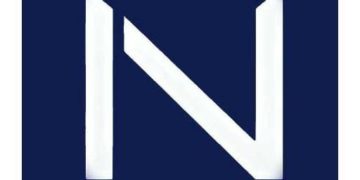Those established leaders usually have substantial budgets for coaching and more time to attend courses and seminars, where they benefit further by interacting with peers from other companies.
They can also better apply new models and theories of leadership because they have years of experience to serve as reference points. For emerging leaders with less experience, these new approaches remain abstract and harder to assimilate.
Doing versus studying
While much has been written about doers versus leaders, my experience as a coach has indicated that when it comes to accelerating the development of critical skills, leaders learn more by doing—that is, by solving problems they are currently facing—than by studying new leadership methods and models in the abstract and then trying to incorporate them later.
Here again emerging leaders have fewer resources. Established leaders have usually developed larger and more diverse networks of advisers to turn to when they face challenging problems.
Over the years, when new leaders have faced challenges they could use outside help with, I have introduced them to other leaders who provided valuable advice. To end up with right advisor, however, leaders need to identify the specific skill area they need help with. It may turn out, for example, that their current advisors are not strong at thinking strategically, yet that is the area the leader needs help with. Knowing this, leaders can better focus their search—along with the search efforts of others in their network—to find the right advisor.
A framework for learning leadership through collaborative problem-solving
In using collaborative learning to solve actual problems, it works best to follow a sequence of steps abbreviated by the acronym DOER-R, which stands for Defining, Owning, Enlisting, Resolving, and Reinforcing. While these steps occur in a natural sequence, leaders may often find it necessary to revisit earlier steps as they proceed. In addition, “reinforcing” is a step that occurs not just at the end of the DOER-R process but at every step along the way and after important interactions between the collaborators within each step.
Unlike typical collaborations, when we are focusing on leaders collaborating with outside practice partners, the leaders who are seeking help drive the collaboration—even though at certain points the practice partners may temporarily drive the process when it involves their area of expertise.
Note that leaders can also use this learning framework in the course of their daily work when they are collaborating with team members and individual contributors, thereby turning these activities too into learning tools for all participants.
#1 Defining the problem
This first step may seem obvious, but it’s the most critical step, and, for leaders seeking collaborative help from a partner, it needs to include not only a definition of the problem area but the skill needed to deal with it.
Take the case of leaders who are launching new products in a short timeline but are having a hard time working with the product manager to flesh out launch details. Leaders may see the problem as the need to develop options to find someone else they can work with more effectively.
It could be, however, that the leader hasn’t defined the problem accurately. Instead of being primarily the fault of the product manager, the problem could be that both leader and product manager are having difficulty understanding how to work with each other. In this case, the problem is better defined as, “How can I work more effectively with X.” The leader needs to better understand how the product manager approaches work—and help the product manager understand how the leader works.
So the skill needed here is “learning”, or how to learn more about the product manager’s way of approaching work. And if it is not one of their strong skills, leaders need to look for help from a practice partner who is strong in learning skills rather than someone who can help them find a person to replace the product manager on short notice.
#2 Owning
The second step in the DOER-R framework is owning. If emerging leaders have decided to pursue collaborative problem solving as a learning tool, they have obviously “owned” the problem in the sense that they’ve decided that they are the ones who need to drive a resolution. When they approach another leader to collaborate, however, they will also need to get a similar commitment from this practice partner to see the project through to resolution.
#3 Enlisting
Successfully enlisting the aid of a practice partner is closely entwined then with the process of shared ownership.
This is another illustration of how, though the steps in the DOER-R framework are naturally sequential, they often involve revisiting earlier steps as the collaboration proceeds. It could be, for example, that their practice partner helps them see that they have inaccurately defined the problem they face; and, as a result, emerging leaders may need to enlist a new practice partner with different skills.
#4 Resolving
Leaders need to be clear from the very beginning what a successful resolution will look like. Consider the case where leaders dealing with a product launch may have determined that success will mean getting a significant volume of sales or customers in 90 days. When the time is up, however, it turns out that, yes, they may have brought in the numbers they were looking for, but the cost to bring them in has been too high. They should have more accurately envisioned success in terms of profitability rather than volume.
Knowing exactly what success will look like could affect the skills leaders are looking for and help them better identify for their search network who their sought-for collaborators should be.
#5 Reinforcing
In the DOER-R framework, the final R stands for reinforce. It refers to the practice of evaluating how effective the collaboration has been by asking questions such as, “How did we do?” and “How well are we working together?”
This is a major part of the accelerated, collaborative learning process. Although it’s done formally at the end of the collaboration, it should be done informally throughout the process. For instance, when both partners have apparently agreed on the correct definition of the problem to be solved, the emerging leader needs to check in to see if the practice partner is really happy with the definition. In some cases collaborating partners may have had some questions but decided to go along with the leader’s determination that the definition is adequate. Having failed to express their misgivings, practice partners may lose their enthusiasm for the collaboration and choose to bow out of the process later because they no longer feel like true partners. So it’s important for the leader to ask, “Are we totally satisfied with the definition and ready to move on to the next phase?” This encourages the other to bring up any lingering questions.
Because we are looking at collaborative problem solving as a vehicle for learning, it’s also important to include, if possible, an experiential element in reinforcing where the two partners regularly consider not only if they covering the steps effectively but how they feel about the manner of their interactions. Since this takes additional time, it’s an optional step that depends on how much time the two partners have to allot to this exercise and how inclined they are to value it. This experiential element can involve simply saying, “I like how you clarified that”. But it can also involve discussing anything problematic. If the practice partner has a way of being very abrupt or harsh when giving feedback, for instance, the leader needs to bring this up. And the leader should encourage the practice partner to do the same.
One reason mutual feedback on how they are connecting is important is that hearing good advice and fully buying into it are two different things. No matter how mature the leader may be, it’s a nearly universal trait to be reactive, at least initially, when we get advice we don’t want to hear. This reactivity can be reduced and its duration shortened when advice-givers present their feedback in a sensitive manner. If either leaders or practice partners feel irritated or slighted, and this is never addressed, it may weaken their motivation to continue partnering.
Because the goal here is not merely to solve a problem but grow as a leader, It’s up to the leader to make this connective element part of the process. The leader will have to balance the need to get results as quickly as possible with the need to learn, while understanding that feedback on how well the partners are collaborating may in fact lead to better and/or quicker results.
This connective element is also one of the reasons partnering with an individual is more helpful than using generative AI as a practice partner who can mimic well-known business gurus to provide feedback. AI can provide solid answers to leaders’ questions but cannot offer this connective support. Nor can it provide the occasional forcefulness, the insistence on revisiting earlier points, and the probing questions that may be required from the practice partner to make the collaboration effective.
Finally, reinforcement at the end of each step and at the end of collaboration process underscores any new skills learned, helping leaders retain and build on that learning. This is an essential part of helping emerging leaders accelerate their learning by doing—whether they are collaborating with practice partners or working with their own subordinates.









































